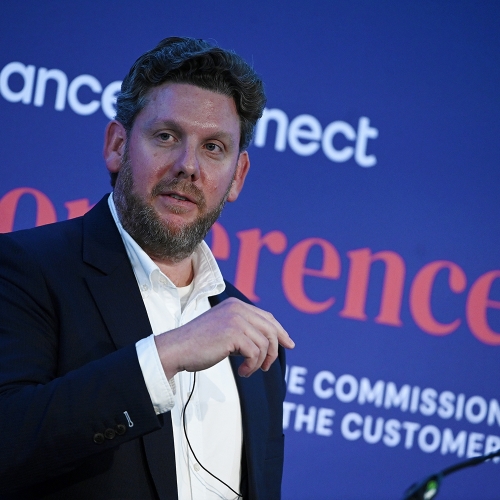Summary
The Asset Finance Connect Summer conference brought together various members of the asset finance community – hybrid broker funder, broker, bank-owned funder, technology provider – to discuss the future of the broker in an increasingly digital world.
As borrowers’ expectations around the customer journey change, the pace of regulation accelerates and the competitive landscape develops the future of the asset finance broker looks increasingly unpredictable in the face of three key challenges:
- Competition
- Regulation
- Technology
Guidance from brokers or advisers is as essential as ever in supporting small and medium-sized businesses in the pandemic recovery period, providing their expert knowledge on products, providers and the industry as a whole.
However, post Covid lockdowns, many consumers have become more comfortable with a digital approach to finance, while many traditional firms that might look for asset financing have moved their businesses online.
Technology is progressing and apps and mobile technology can now handle everything from quoting to CRM and proposal management, at the expense of face-to-face customer service and support.
To capture online businesses looking for asset financing, brokers need to provide the experience and relationship customers expect but in a seamless, digital approach. Many brokers are therefore having to add or update their technological systems to stay compliant and competitive.
As Christian Roelofs, CEO of Finativ noted, “the broker market itself is a very fragmented market”. There are a few very large brokers with teams of people and managing directors who have time to discuss technology and strategy, but a large segment of the market is made up of smaller managed or owned businesses with limited capacity to handle future innovation and digitalisation.
Competition
For the asset finance broker, competition is less about broker-to-broker competition, as brokers have their own ‘patch’ and client base, and more on new, often technology-enabled, entrants that are coming into the market and, in particular, on digital aggregators.
Jim Higginbotham, Group CEO of Star Asset Finance, points out below that in the customer-broker-funder value chain, there are competitors who are better or worse at different parts of that value chain throughout the industry
Higginbotham points to those businesses who can combine technology with the customer interface, providing the value add in a seamless customer experience, as the real winners in the competition: “Working together in partnership with the people who best serve different parts of the value chain is going to create the best customer outcome.”
Steve Dexter, Sales Director at Clear Business Finance highlights that no one in the market is afraid of the competition as long as it is fair and equal for all, and notes that regular communication is vital to brokers in maintaining their relationship with the funder, the supplier and the end user.
Dexter argues that while digital disruptors will enter the market, they are unlikely to stand the test of time, as they will not be capable of building similar relationships. It’s a point echoed by Neil Davies, CEO, Commercial at Close Brothers who sees the broker as having the most agile response to a changing market.
The ownership of the customer is essentially the critical piece of the puzzle that needs to be understood in terms of how competition is changing, according to Katrin Herrling, CEO & Co-Founder of Funding Xchange. All sectors are thinking about their relationship to the customers and how they can serve customers better using access to the information that they have.
Regulation
Brokers cite excessive red tape as one factor which is driving them out of business, although many independent brokers find that FCA regulation does deliver some benefits too.
The indirect regulation which reaches the broker and customer via banks is having an increasing impact on the broker and the funder-broker relationship, as opposed to direct regulation on the broker themselves. And as recent discussions on commission disclosure have demonstrated, brokers lack a voice when it comes to the creation and application of regulation.
The recent publication of the new Consumer Duty rules and guidelines will undoubtedly have an impact on brokers with implications for fees, commission disclosure and quantum of commission. The new Consumer Duty principle will expect all members of the value chain to take responsibility for achieving good outcomes for customers. Any lack of clarity about the value that brokers deliver to their customer is likely to attract increased scrutiny.
From Davies’ perspective as a lender, there will be increasing pressure to question whether the broker is sufficiently looking after the customer and providing a good customer outcome, and whether they helped to identify a vulnerable customer.
In his experience, Higginbotham believes that “delivering regulation properly is a partnership piece,” where having a genuine partnership with people in the value chain who align their approach to create a good customer outcome can only be a positive because “if any part of the process breaks down and doesn’t create a good customer outcome, everyone’s a loser”.
From Dexter’s perspective as a broker, regulations are there to protect the customer, which can only be a positive for businesses. However, when there is a supplier in the chain it becomes more complicated because often it is the supplier that is dealing with the customer. So, brokers have to make sure that the supplier understands what their commitments are and what they should be doing with the customer. Brokers should therefore be more involved in the introduction of new regulation and their impact on brokers.
Higginbotham from a hybrid-broker-funder perspective, sees the principle-based Consumer Duty as a positive for the longevity of asset finance business due to the focus on good outcomes for customers.
However, the challenge comes from distinguishing where the responsibility and the principal lies if things go wrong. Higginbotham has noticed a definite trend in relationships with funders where a lot of the financial pain for non-compliance is being passed through trading agreements back to the broker and notes “While you can’t abdicate responsibility, you can offset it through an indemnity clause.”
“Delivering regulation properly is a partnership piece.”
Jim Higginbotham, Group CEO, Star Asset Finance
Herrling does not want asset finance to be an industry “where we compete based on whether we’re compliant or not…a key principle has to be that we as an industry need to find a way that we can demonstrate we’re compliant, and not try and out compete each other by skirting around the edges.”
Herrling demonstrates that at Funding Xchange, “the way we operated from day one is that for every single customer who comes to us, we have a trail of evidence of how they’ve been treated, what offers they’ve been shown how they’ve interacted with us, who they’ve progressed with us what’s been the outcome. And that trail of evidence of interactions is providing the backbone of how we can demonstrate that we’re treating every single customer actually fairly, and fulfilling our customer duty.”
Herrling sees that this use of technology helps to remove barriers, enabling brokers to stay compliant and fulfil their customer relationship duties.
Technology
For brokers looking to stand out in the market, it will become increasingly important to adopt a digital solution that adds value across the entire asset finance lifecycle and facilitates a frictionless customer journey on a single tech platform.
The motor finance industry has been working with an enabled and efficient platform connecting brokers and lenders via API for the past 20 years, so why are asset finance brokers not following suit and investing in technology?
In asset finance, many brokers are much more comfortable sending a proposal to their customer contact, rather than going into a digital broker portal and sending something through the portal and then waiting for an outcome.
In addition to the lack of investment by brokers themselves into new digital platforms, there is also a lack of consistency between lenders of what they want brokers to supply, with brokers are left to key in an application into multiple forms that are all slightly different for each of the lenders they work with.
“Technology is not going to replace the broker in terms of customer engagement and relationships.”
Katrin Herrling, CEO & Co-Founder, Funding Xchange
Technology is not going to replace the broker in terms of customer engagement and relationships. It will, however, as Herrling notes, be there as a problem-solving tool to assess a proposal and data: “Technology has to be very, very clear about the problem they’re solving, which is reducing the time it takes to assess a proposal that comes in from a book or on a different channel.”
As a broker, Clear Business Finance’s Dexter has considered using a digital solution for delivering a service, but not to manage the regulatory burden. Dexter confesses that his view on technology is that, “as a broker, you ignore at your peril”.
However, as the next generation of business owners will be technologically proficient, brokers need to invest now to update and develop digital platforms. To provide a complete customer experience, the technology and the speed is needed to provide quick and slick customer service and a good relationship.
Star Asset Finance’s Higginbotham sees the technology solution as part of an end-to-end solution with built-in compliance creating an evidence trail automatically. Herrling agrees that a self-serve solution only works for very simplistic deals and won’t serve the customer, or the funder, in the right way. For brokers who are using technology, the digital platform can support the advisory services that they provide to their clients and can evidence that they have viewed different funders and have made a decision about which funders are suitable for their customers.
Is there a future for brokers?
The UK’s changing asset finance and regulatory landscape has presented a number of challenges for growth for brokers, as well as the tools and processes they can adapt and use to succeed. Unfortunately, the falling number of brokers across the UK is resulting in the loss of face-to-face customer support and specialist knowledge and experience.
The customer engagement and relationship which is key to the role of the broker is vital for the industry going forward. However, technology will become just as important in the modern broker’s day-to-day role to increase customer conversion, retention and profitability. Not only can digital tools help manage the repetitive manual work, but they can also manage the sales, compliance and governance processes, making brokers more compliant and data driven.
Brokers will need to adopt a seamless customer journey on a digital platform to stay ahead in the asset finance market and to remain compliant and competitive.




